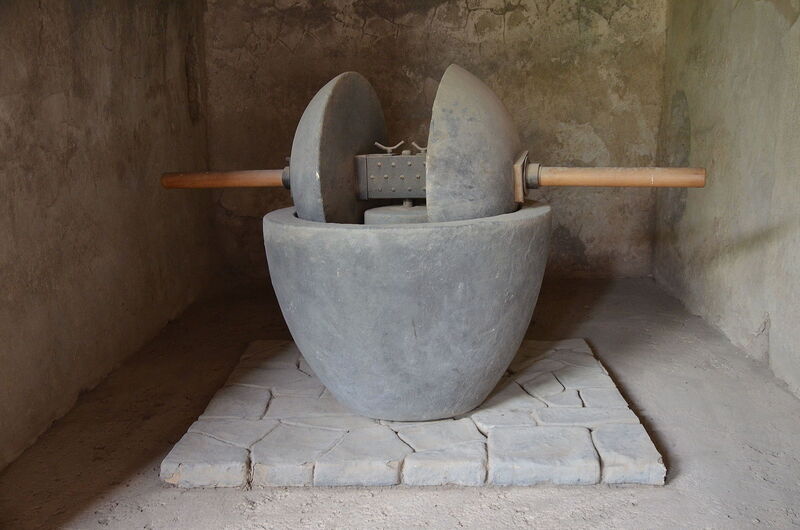Olive Crusher

Olive Crusher (trapetum) on display in the House of the Ship Europa, Pompeii, ca. 4th-3rd century BCE
Much like butter is used for toast, the Romans used olive oil for all their cooking needs. Olive oil is made from a tree-grown fruit called olives that were very important in the ancient Mediterranean. Olive oil was essential in the Romans' diet, whether for bread, meat, or vegetables. How did olive oil get madefrom a tiny fruit? From extraordinary giant contraptions like this! This particular contraption was made almost entirely from stone. How heavy! The trapetum, or the "olive crusher," was used to separate the pulp of the olives from the olive pits so that the olive oil could have a better taste. The Olive Crusher was made of a large stone bowl in which the olives were poured. The crushing would occur under these two stone pieces called "orbes' ' connected to a middle post in the large stone bowl, where the olives were poured. This made it easy for the two orbes to then crush the olives. It is also known as the rotating olive mill. The olive crusher was mainly used during the "Byzantine period." The Romans later used it until they made something called the "mola olearia," or the olive mill.
Sources:
Tyree, E. Loeta, and Evangelia Stefanoudaki. “The Olive Pit and Roman Oil Making.” The Biblical Archaeologist, vol. 59, no. 3, The American Schools of Oriental Research, 1996, pp. 171–78, https://doi.org/10.2307/3210548.
Margaritis, Evi, and Martin Jones. “Olive Oil Production in Hellenistic Greece: The Interpretation of Charred Olive Remains from the Site of Tria Platania, Macedonia, Greece (Fourth—Second Century B.C.).” Vegetation History and Archaeobotany, vol. 17, no. 4, Springer, 2008, pp. 393–401, http://www.jstor.org/stable/23419166.